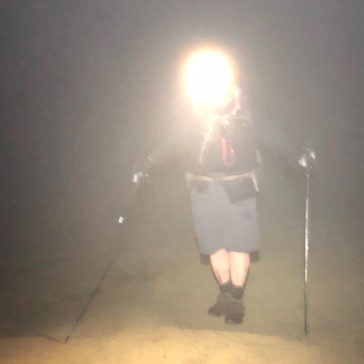Dima, Eli, and I decided to check out the rest of the canyon after pausing our excavation. We came across this green moss on the side of the mountain. I look across the canyon to see a MINE IN THE CLIFF right above the trail I have been walking on for years!!!
We explored it, took down the coordinates and found a bucket and a sled. It is only 15 feet-ish so nothing too cool, but we named it the Green Moss Mine for obvious reasons.
Finding the Green Moss Mine in Las Flores Canyon
-
Matthew

- Supercaff
- Posts: 468
- Joined: Mon Nov 30, 2015 8:25 am
- Location: Pasadena
You do not have the required permissions to view the files attached to this post.
stoke is high
-
stonehillnews

- Posts: 85
- Joined: Thu Dec 15, 2016 1:31 pm
The first photo isn’t clear enough to be sure, but the bush without leaves looks like it might be poison oak. Are you familiar enough with how oak looks in the winter to say?
-
Matthew

- Supercaff
- Posts: 468
- Joined: Mon Nov 30, 2015 8:25 am
- Location: Pasadena
I am not too sure what poison oak looks like in the winter. Definitely brushed up against it today. No itchy spots yet!stonehillnews wrote: The first photo isn’t clear enough to be sure, but the bush without leaves looks like it might be poison oak. Are you familiar enough with how oak looks in the winter to say?
stoke is high
-
stonehillnews

- Posts: 85
- Joined: Thu Dec 15, 2016 1:31 pm
You have 4 to 8 hours to clean the oil off your skin. If you leave it on your skin longer than that you might get itchy and/or a rash
-
mattmaxon

- Posts: 1137
- Joined: Mon Mar 24, 2008 12:48 pm
Some clear signs of Poison Oak in winter
small white fruit
reddish bark
joints where there are climbing / fastening hairs
red/orange/yellow oak like leaves on the ground
places where the stem has attached to something and is climbing
My opinion for what it is worth the majority of poison oak exposures are from hikers sitting in dead leaves and placing their pack in dead leaves
The "best" way to not get poison oak is to know what it looks like in all seasons and avoid contact wherever / whenever possible with all parts of the plant.
Remove poison oak exposed clothes before getting in your vehicle. Wash the clothes and yourself immediately when home
Consider having separate gear for explorations where you will likely have PO exposure or wash your gear
bathe dogs that have been poison oak and seat covers
For me this is the jumping cholla of the local mountains, what possible purpose in nature does this plant serve
small white fruit
reddish bark
joints where there are climbing / fastening hairs
red/orange/yellow oak like leaves on the ground
places where the stem has attached to something and is climbing
My opinion for what it is worth the majority of poison oak exposures are from hikers sitting in dead leaves and placing their pack in dead leaves
The "best" way to not get poison oak is to know what it looks like in all seasons and avoid contact wherever / whenever possible with all parts of the plant.
Remove poison oak exposed clothes before getting in your vehicle. Wash the clothes and yourself immediately when home
Consider having separate gear for explorations where you will likely have PO exposure or wash your gear
bathe dogs that have been poison oak and seat covers
For me this is the jumping cholla of the local mountains, what possible purpose in nature does this plant serve
-
Sean

- Cucamonga
- Posts: 4258
- Joined: Wed Jul 27, 2011 12:32 pm
Ah, philosophy! I live for questions like this. The main purpose of any living thing is to keep on living. Poison oak survives because of its various evolved traits that are beneficial to its own survival, including the fact that humans are allergic to it. Its oils serve as a deterrent to anyone who enjoys trampling through its domain. Kind of like how thorns tried to deter me from trampling certain plants en route to Buck Point.mattmaxon wrote:For me this is the jumping cholla of the local mountains, what possible purpose in nature does this plant serve
-
David R
- OG of the SG
- Posts: 632
- Joined: Sun Jun 12, 2011 10:28 pm
Poison oak is critical for the environment. Squirrels and towhees use the bushes to seek shelter and build nests. Towhees then eat the berries and spread the plant through excrement. Most ruminants use poison oak as food like deer. Removing personal distaste, it is a beautiful plant especially in the fall. Now Poodle Dog has zero purpose and can go to hell for all I care.
